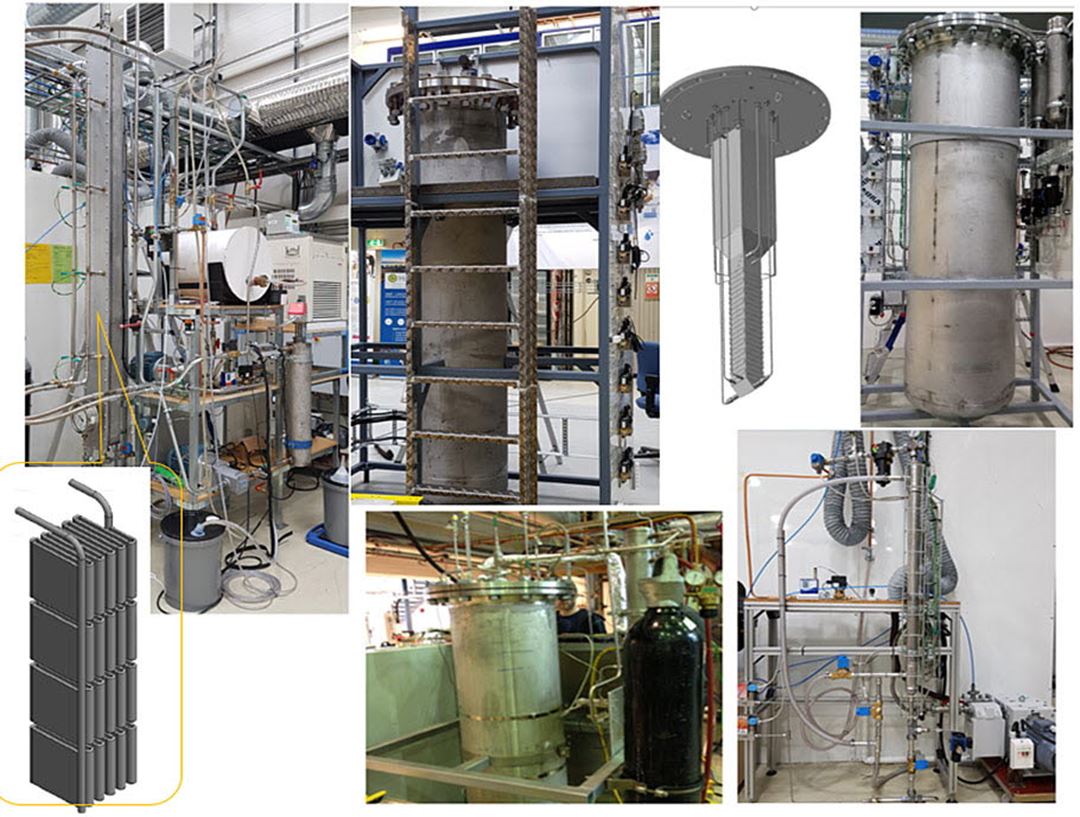The experimental activities have very strong links to reactor modelling and techno-economic assessments, which are used to demonstrate that competitive CO2 avoidance costs can be achieved with these technologies. The infrastructure is also highly flexible for running a wide variety of multiphase reactive systems under extreme conditions for testing and validation of novel systems and processes, as well as for model validation.
Summary of infrastructure:
- A single high temperature dense bed reactor (~1 kg powder load, 1 kWth, 10 bar & 1000 °C) with flexible gas feed system
- A three-reactor cluster for high temperature pressurized dense bed reactions (~40 kg powder load, 50 kWth, 20 bar & 1100 °C)
- A high temperature pressurized Internal Circulating Reactor (4 kg powder load, 10 kWth, 10 bar & 1000 °C)
- A reactor with inbuilt heat transfer surfaces for combined Vacuum Temperature Swing with heat integration currently used for adsorption post combustion CO2 capture (~20 kg powder load, 10 kWth, 0.05-1 bar pressure and up to 200 °C)
- A small-scale reactor for breakthrough measurement under combined vacuum and temperature swings (~100 g powder load, 0.05 to 1 bar pressure and up to 200 °C)
- Cold flow setups for proof of concept, flow visualization and measurement:
- A pseudo-2D membrane assisted fluidized bed (3-5 kg powder load)
- A pseudo-2D internal circulating reactor (3-5 kg powder load

